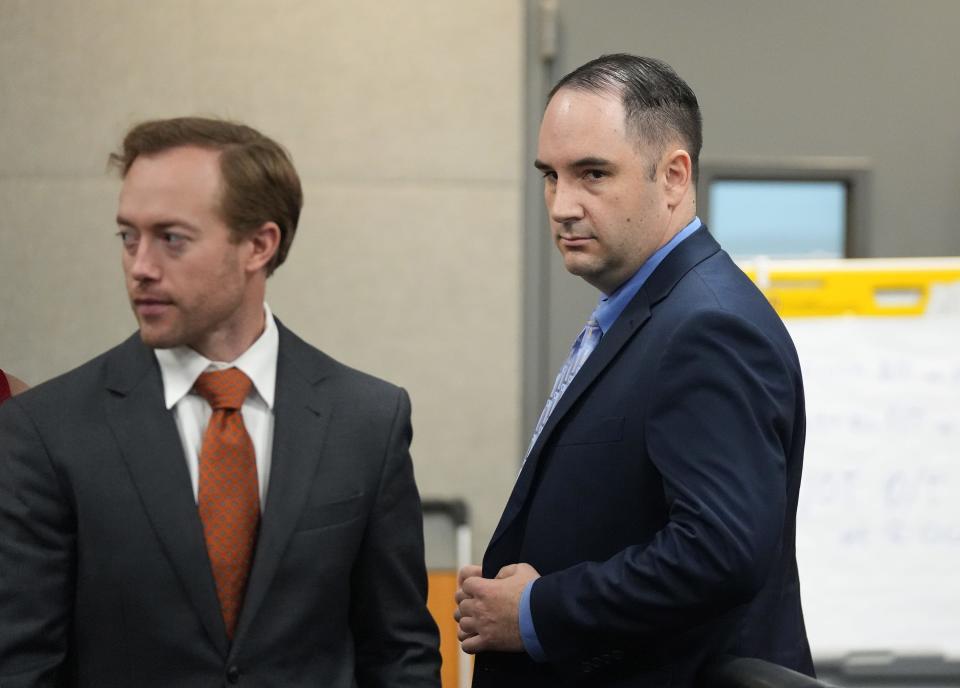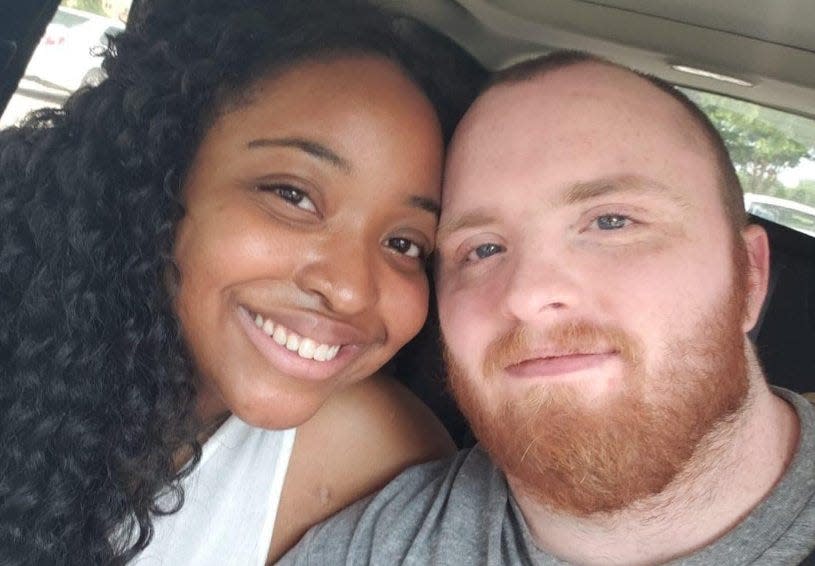Jury weighs whether Austin protester Garrett Foster was killed in self-defense in 2020
Jurors on Thursday began weighing whether Uber driver Daniel Perry was acting in self-defense when he shot and killed Austin protester Garrett Foster in 2020.
During closing arguments in Perry's murder trial, defense attorneys said Perry had no choice but to shoot Garrett Foster five times as he approached Perry’s car with an AK-47 rifle. Prosecutors countered that Perry had plenty of choices, including driving away before he fired his revolver.
Defense attorney Doug O'Connell said prosecutors wanted the jury "to believe (Perry) had this evil plan when he turned right."
"The protesters didn't know anything about Perry when they attacked the car and boxed it in," he said, "and Daniel had no choice, and that could have happened to anyone."

Prosecutor Guillermo Gonzalez disagreed.
"This is an age-old story about a man who couldn't keep his anger under control," said Gonzalez. "It's not about police, and it's not about protest marchers."
Whether Perry, fueled by anti-protester beliefs, provoked the shooting by driving into a crowd of marchers or whether Foster pointed his rifle at Perry and Perry fired in self-defense has been at the heart of the much-anticipated trial that began March 28 in Travis County's 147th District Court.
More: Officer testifies Austin protester Garrett Foster had been warned about way he carried his rifle
It is the highest-profile case to go before an Austin jury since the start of the pandemic and one of the most significant that District Attorney José Garza has handled since taking office in 2021.
Perry, who is an Army sergeant, was traveling on Fourth Street on the night of July 25, 2020, and turned onto Congress Avenue, where a Black Lives Matter crowd was marching. Perry stopped, and several protesters approached his car, including Foster, police have said. Protesters have said they feared they were being attacked by someone in a car. Defense lawyers have said Foster, 28, raised his AK-47 at Perry, and that Perry, 37, fired in self-defense.
A few witnesses said during the trial that Foster never raised his rifle at Perry. Perry, who did not testify, told police that Foster did. There was no video or photos presented at the trial that showed the position of Foster's rifle when he was shot.

O'Connell argued Thursday that Foster was dressed for battle at the protest, including wearing a neoprene vest under his T-shirt and carrying an AK-47, a club and a knife. Perry was wearing a T-shirt, shorts and flip-flops, the attorney said.
"Garrett Foster is dressed for war," O'Connell said. "Daniel Perry is dressed for the beach."
He said that if Perry had come to Austin to instigate trouble with protesters, he would have dressed differently and not left his tactical vest in his car's trunk. He also said that Perry was more concerned in the moments before the shooting about meeting up with a woman he had just met and was texting her.
"Does that sound like someone who is intent on provoking a confrontation?" O'Connell asked the jury. "Not at all."
O'Connell also said that Perry had made comments against protesters on social media before that night, but it was at a time when the "whole world" was talking about the police killing of George Floyd in Minneapolis.
More: Witnesses: Austin protester Garrett Foster did not raise rifle toward Uber driver who killed him
"I don't like his social media posts," said O'Connell. "But it is not evidence that this man committed murder or aggravated assault."
Perry also has been charged with aggravated assault in the incident because prosecutors said he aimed his car directly at an observer named Justine Nolt who was at the march.
Defense attorneys have said Nolt was standing at the side of Perry's car and that he never saw her. Nolt testified during the trial that she was afraid if she had not stepped out of the way of the car, she would have been injured.
After Perry made a right turn into the crowd, he slowed down and was surrounded by people hitting and kicking his car, said O'Connell. He said Perry couldn't drive away because there was a protester standing in front of him.
O'Connell said that when Foster walked up to Perry's car, even if Foster was carrying his AK-47 with its barrel down, it would have taken him two-tenths of a second to raise and fire the rifle, and the shot could have gone through Perry's car door. Since Perry was in the Army, he knew about the power of AK-47s and had no choice but to fire his revolver, O'Connell said.
The defense attorney also questioned why the prosecutors never hired an expert to analyze how fast Perry was going when he turned into the crowd. A defense witness who analyzed photos and videos and developed 3D images from them testified during the trial that Perry slowed down when he turned into the crowd.
More: Trial in death of Austin protester Garrett Foster begins. Was it self-defense or murder?
Prosecutor Gonzalez said the expert used by the defense to determine Perry's speed was wrong. The expert said that a photo taken by a protester showed Foster standing at Perry's door one-tenth of a second before the shooting. But the photo also showed the muzzle fire of Perry's gun, so that meant a shot already had been fired. Other video evidence showed that Foster was still walking toward Perry's car right before he was shot, Gonzalez said.
He also said that police never inspected the infotainment center in Perry's car, which might have shown how fast Perry was going. Gonzalez said Perry instigated the shooting by driving into the crowd. He said Perry already was angry when he made a right turn onto Congress because the woman that Perry wanted to meet had asked him for $200.
Perry ran a red light on purpose when he drove into the crowd, said Gonzalez.
"All other cars at the intersection stopped," said Gonzalez. "Why did he do it?"
Perry also started honking his horn in the middle of the turn instead of hitting his brakes, said Gonzalez.
Gonzalez said Perry's posts on social media show he clearly had very strong feelings against protesters, including saying that people could get away with shooting them in Texas.
Prosecutors also said that Perry was not boxed in by protesters. Elizabeth Lawson said during closing arguments that a photo taken shortly before the shooting showed no protesters standing in front of Perry's car and none standing on the passenger side.
More: Austin protester Garrett Foster was shot three times, witnesses testify in murder trial
Perry also gave police different versions of what happened, including that the light was yellow when he turned and then saying another time the light was red, Gonzalez said. He said police never asked Perry why he kept changing details about what happened.
Perry said at one time he unrolled his window when Foster approached his car because he thought Foster was a police officer. "If he thought he was a cop," Gonzalez said, "then why did he shoot him?"
He also said that Foster was acting in self-defense when he walked up to Perry's car because Perry had provoked him by driving into the crowd of protesters, and that Foster was concerned about the safety of his fellow marchers.
This article originally appeared on Austin American-Statesman: Jury weighs whether Daniel Perry killed Garrett Foster in self-defense

